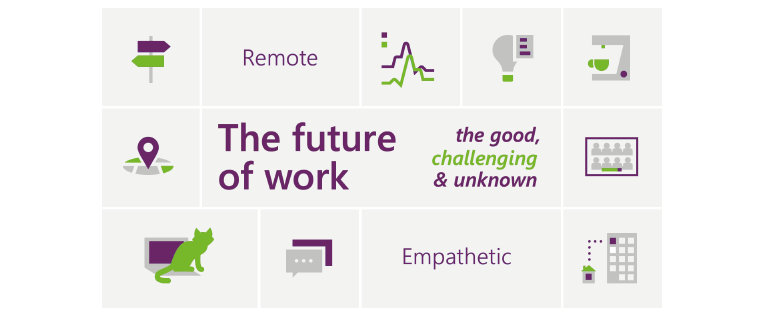When the pandemic first instigated, there was a global shift in the way we work. Many organisations had to adapt their infrastructure quickly for their employees to work remotely from their homes.
August and September, saw more confidence amongst everyone, meaning that employees started to return to their office and visit clients, whist following social distancing rules. However, with the second national lockdown beginning this tomorrow, most organisations are ready for their staff to work remotely from their homes.
But as the initial era of “remote everything” has given way to durable, hybrid models, we’ve entered a new digital age that is completely transforming the way we work and learn not only for today, but for the next decade.
To connect, collaborate, and create in this new world we live in, whether we are at home, at the office, school or in frontline sectors such as healthcare including both hospitals and care homes, we need an experience that goes far beyond video conferencing or instant messaging solutions.
The key to productivity is to move beyond video conferencing and focus on the way people work remotely. Most users of Microsoft Teams don’t just use Teams for video conferencing, they work in Teams all day. Teams offers a place to exchange ideas, share information and create human connections remotely. It’s a way of collaborating with your colleagues while working from home, a way to interact with clients and more importantly, for managers to monitor the productivity and the wellbeing of their remote workforce.
Digital wellbeing has become more critical over the last few months. Most users have found that its easier to pack more back to back meetings over video in one day, but didn’t realise that video fatigue plays a big part in this. Most employees love the ability to work from home and look after their family, and in return, some have been more productive and worked long hours outside their office hours.
The downside with this, is that starring at a computer screen for more extended periods of time is not good for the digital wellbeing of an employee.
Of course, some employees prefer to work from the office, and may not perform as well when working from home. Teams offers many wellbeing tools to allow managers to monitor how employees are performing and offer help to improve the way they work remotely, and in turn, increasing their productivity and digital wellbeing.
Teams brings many aspects of working remotely into a single experience, from holding meetings, chats, calls, collaboration, business processes and linking to third-party applications. Teams is seen by many as the preferred way to work remotely.
As much as Teams has transformed the way we work remotely, it’s really the tip of the iceberg. Teams integrates with a range of applications available in Microsoft 365 and because as people work all day in Teams, they also get the full breadth and depth of Microsoft 365.
There is an integrated suite of graph-connected productivity apps and experiences behind the familiar tools we all rely on every day to connect, collaborate, and get work done.
For that reason, daily active usage only tells a portion of a collaboration story; a broader collaboration metric is needed to understand the changing ways in which we work and collaborate. What’s needed now is a metric that demonstrates the breadth of services people use and the new rich and varied ways in which collaboration happens across hybrid work environments. The accurate measure of collaboration transcends simple videoconferencing or chat-based communications.
The more holistic view takes into account the many ways people and teams engage in the flow of work. In Teams, we see meetings, but also small group huddles, chats, calls, document collaboration, and individual work. Teams also offers a daily collaboration minutes (DCM) metric. This defines the sum of all minutes users have spent in Microsoft 365 applications, such as Teams, Word, Excel, PowerPoint, Outlook, OneNote, SharePoint, OneDrive and more.
This new metric combines both synchronous and asynchronous collaboration and reflects the changing nature of work. With Teams as a hub, Microsoft 365 brings the power of the cloud to every person, providing them with a secure, integrated experience designed for a new world of work.
For more information on Microsoft 365 including Teams, call us on 01509 410 410.



